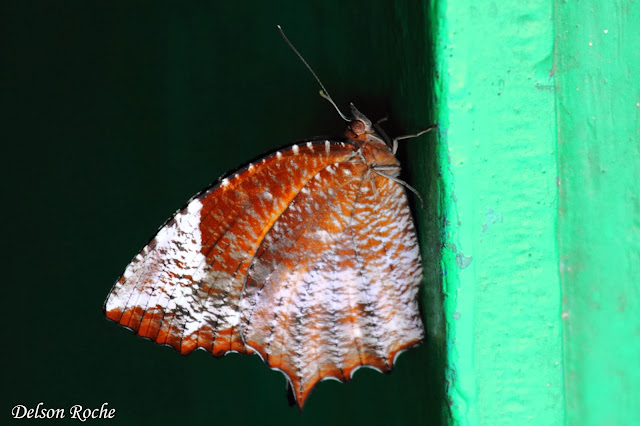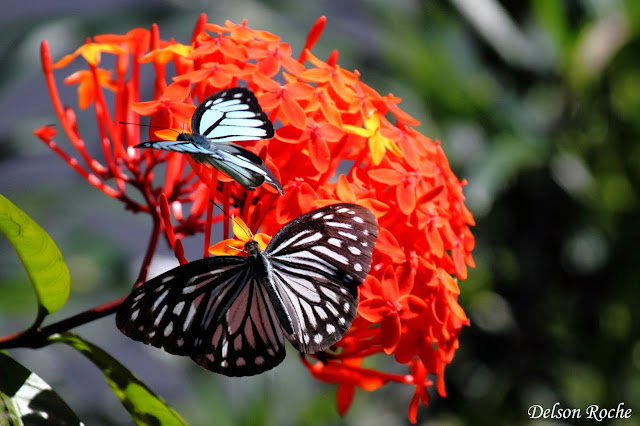Today I end this series on butterflies, with this shining pupa of a Common Crow (Euploea core) I spotted recently. I managed to present 41 butterflies that visited my garden in the month of October. There were many more, that came by, but because of their constant flight I could never photograph many of them. Nevertheless, this photographic census was quite a learning experience for me. I never imagined I would end up with 41 different butterflies, in a month. There are many butterflies that are seasonal and arrive to our place during different months of the year.
It is said that the number of butterflies, indicate the health of an ecosystem. An annual census like this will probably give me an indication of the direction our eco-system is heading into. Now that I am sailing, a small breathing time for my blog. I will be back in a few months, with more posts and I hope you will all enjoy as I do posting them.




















